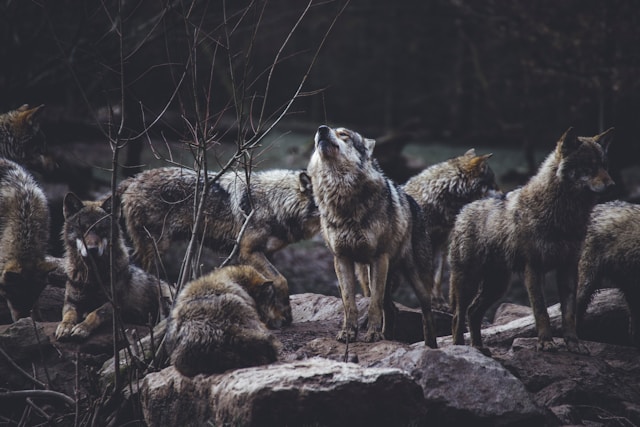Tales of the Stray: Unveiling the Hidden World of Street Animals

In the bustling streets of a nameless city, where the cacophony of car horns and hurried footsteps drowns out the softer sounds of life, there exists a world unseen by most. It’s a world of survival, of quiet courage, and of unexpected kindness. This is the world of the stray – a realm where abandoned animals navigate the urban jungle, seeking shelter, sustenance, and perhaps, a glimmer of hope for a better tomorrow.
The Invisible Citizens
Strays are the invisible citizens of our urban landscapes. They pad silently through alleyways, curl up in forgotten corners, and watch the world of humans with wary eyes. These animals – mostly dogs and cats, but sometimes others – have either been abandoned by their owners or born into a life on the streets. Their tales are as diverse as they are heartbreaking, yet each story is bound by a common thread of resilience.
The Many Faces of Strays
- The Abandoned Pet: Once cherished companions, these animals find themselves cast aside due to various circumstances – moving homes, financial difficulties, or simply a change of heart by their owners. They often struggle the most, having known the comfort of a home and human affection.
- The Born Survivor: These are the animals that have never known a human touch or the safety of four walls. Born on the streets, they learn quickly to fend for themselves, inheriting the survival instincts of their parents.
- The Escapee: Some strays are accidental wanderers, having slipped out of open gates or broken free from their leashes. Lost and confused, they face the daunting task of surviving in an unfamiliar world.
- The Feral: Often misunderstood, feral animals are those who have lived their entire lives without human contact. They are the most challenging to rehabilitate and often form their own communities in urban areas.
A Day in the Life
The life of a stray is a constant struggle for survival. Each day brings new challenges and dangers:
The Search for Food
Foraging becomes a full-time occupation. Strays learn quickly where to find discarded scraps – behind restaurants, in trash cans, or from the occasional kind-hearted passerby. However, this search often puts them in harm’s way, exposing them to traffic, hostile humans, or conflicts with other animals.
Finding Shelter
Protection from the elements is crucial. Abandoned buildings, overgrown lots, and even storm drains become precious real estate. In winter, the search for warmth becomes desperate, with many strays huddling together for survival.
Navigating Human Spaces
The urban environment is a maze of dangers for strays. Traffic poses a constant threat, while well-meaning but misguided humans might report them to animal control. Learning to navigate these spaces without drawing attention becomes a vital skill.
Health Challenges
Without access to veterinary care, strays face numerous health issues. Parasites, injuries, and diseases spread quickly, especially in areas with high stray populations. The lack of spaying and neutering leads to unchecked breeding, exacerbating the problem.
The Human Factor
The relationship between strays and humans is complex and often contradictory. While some people view strays as nuisances or even threats, others see them as beings deserving of compassion and care.
The Good Samaritans
In every community, there are individuals who go out of their way to help strays. These unsung heroes provide food, basic medical care, and sometimes even temporary shelter. Their acts of kindness can mean the difference between life and death for many animals.
Community Efforts
Some neighborhoods have banded together to create feeding stations, provide shelter during harsh weather, and even implement Trap-Neuter-Return (TNR) programs for feral cat colonies. These grassroots efforts not only help the animals but also foster a sense of community among residents.
The Role of Animal Welfare Organizations
Non-profit organizations and animal shelters play a crucial role in addressing the stray animal issue. They provide rescue services, medical care, and work tirelessly to find permanent homes for strays. However, these organizations often struggle with limited resources and overwhelming demand.
Tales of Hope
Amidst the hardship, there are stories that warm the heart and restore faith in humanity:
The Unlikely Friendship
In a small town in Greece, a stray dog named Hachiko formed an unlikely friendship with a local cat. The pair were often seen sharing food and sleeping side by side, challenging the notion that dogs and cats are natural enemies. Their bond captured the hearts of locals, leading to both animals being adopted together by a loving family.
The Subway Savior
In Moscow, a stray dog named Malchik became a local legend for his intelligence and kindness. He was known to guide lost passengers through the subway system and even protect women from harassers. When Malchik was tragically killed by a disturbed individual, the community came together to erect a statue in his honor, ensuring his legacy of compassion lives on.
The Social Media Star
A scruffy stray cat in Istanbul, dubbed “Tombili,” became an internet sensation after a photo of him lounging casually on the sidewalk went viral. His laid-back attitude and charming demeanor made him a local celebrity. After his passing, the community commissioned a bronze statue to commemorate their beloved feline friend, turning him into a permanent fixture of the neighborhood he once roamed.
The Road to Change
Addressing the issue of stray animals requires a multi-faceted approach:
Education and Awareness
Promoting responsible pet ownership is crucial. This includes educating the public about the importance of spaying and neutering, the lifelong commitment of pet ownership, and the realities of animal abandonment.
Legislative Action
Many communities are implementing stricter laws against animal abandonment and mandating microchipping for pets. Some cities have even banned the sale of animals in pet stores to curb impulse purchases and puppy mill operations.
Support for Rescue Organizations
Increased funding and support for animal welfare organizations can dramatically improve their ability to rescue, rehabilitate, and rehome strays. This includes government grants, corporate sponsorships, and individual donations.
Innovation in Animal Care
Technology is playing an increasingly important role in animal welfare. From microchip databases that help reunite lost pets with their owners to apps that connect potential adopters with rescue animals, innovation is making a difference in the lives of strays.
The Transformative Power of Compassion
Perhaps the most powerful tales of the stray are those of transformation – both for the animals and the humans who choose to help them.
From Street to Sweet Home
The journey of a stray from the harsh realities of street life to the warmth of a loving home is nothing short of miraculous. These animals, once wary and defensive, often blossom into affectionate companions, their gratitude evident in every wagging tail or contented purr.
The Human Heart Opened
For many people, the act of rescuing or adopting a stray becomes a life-changing experience. It opens their eyes to the plight of these animals and often inspires them to become advocates for animal welfare. The bond formed between a rescued stray and its adoptive family is uniquely strong, built on a foundation of mutual rescue and unconditional love.
Conclusion: A Call to Action
The tales of the stray are not just stories of hardship; they are testaments to the resilience of life and the power of compassion. Each one of us has the ability to make a difference in the lives of these animals. Whether it’s through adopting, fostering, donating, or simply spreading awareness, every action counts.
As we walk through our cities, let us open our eyes to the invisible citizens among us. Let us see the stray not as a problem to be solved, but as a fellow being worthy of kindness and respect. For in helping these animals, we not only improve their lives but also enrich our own communities and remind ourselves of our capacity for compassion.
The tale of every stray is a story waiting for a happy ending. And with each act of kindness, we write a new chapter in these tales – one of hope, of healing, and of the enduring bond between humans and animals.
In the end, the tales of the stray are our tales too – stories of struggle, resilience, and the transformative power of love. By extending our hands and hearts to these animals, we don’t just change their world; we change our own, creating a kinder, more compassionate society for all




